Ansan Mountain: Trails, Tips, and Attractions
Ansan Mountain (안산), standing at a modest height of 296 meters, is one of Seoul’s most accessible and tranquil hiking spots. Located in Seodaemun-gu, this charming mountain is perfect for hikers of all skill levels and offers breathtaking views, well-maintained trails, and a peaceful retreat from the city’s fast-paced life. Unlike the more crowded mountains such as Bukhansan or Namsan, Ansan remains a hidden gem for locals and visitors alike, offering a serene environment for hikers, joggers, and nature enthusiasts. Whether you’re seeking a leisurely stroll or a scenic summit adventure, Ansan Mountain has something for everyone.
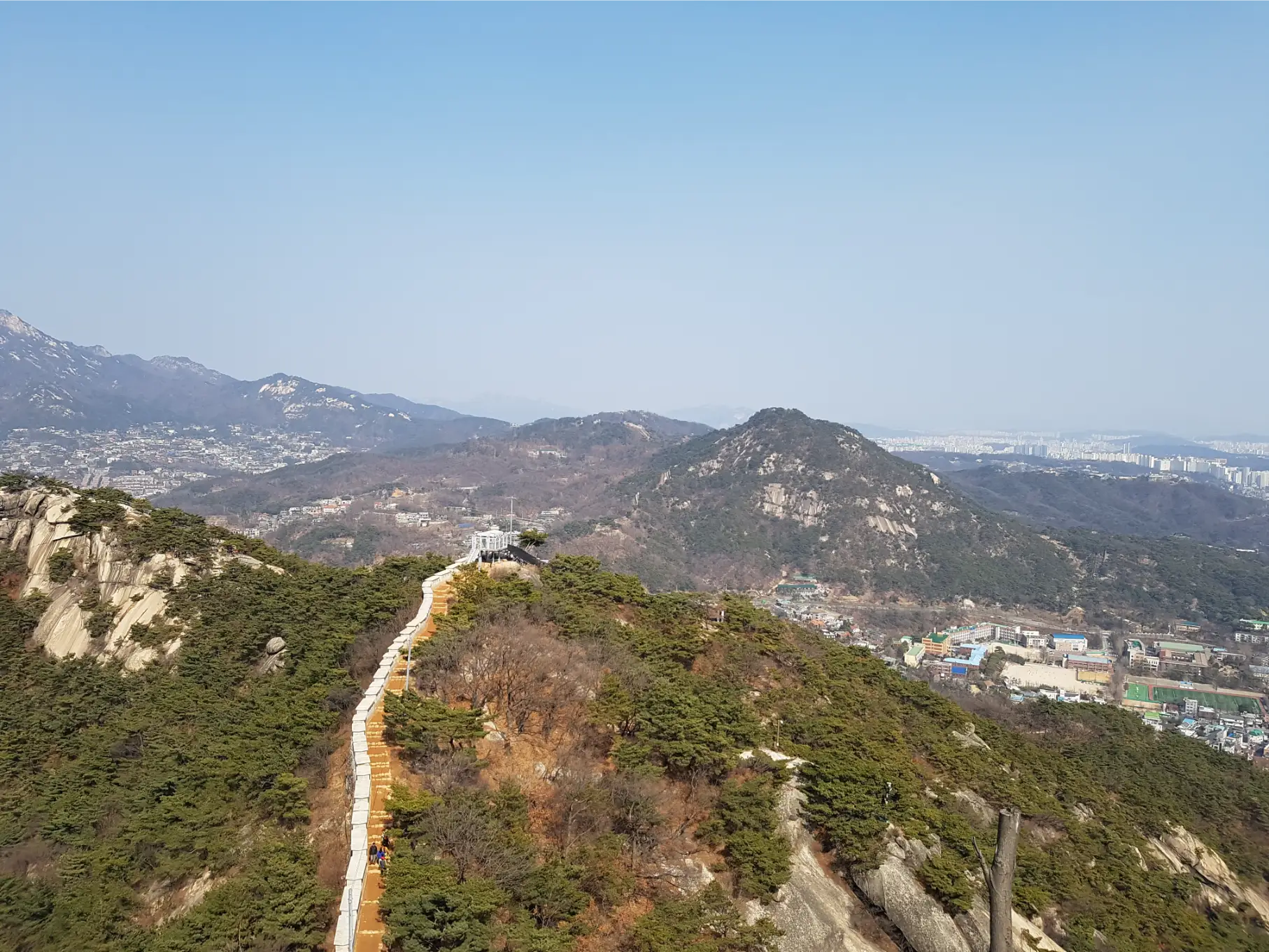
Beyond hiking, Ansan Mountain offers visitors the chance to connect with rich cultural and historical landmarks, including Bongwonsa Temple and the Seodaemun Independence Park. For those planning a full-day itinerary in Seoul, its proximity to other iconic attractions makes it an excellent destination to include in your travel plans. Whether you’re visiting for a day or just a few hours, this mountain in Seoul ensures a blend of natural beauty and cultural exploration.
Why Visit Ansan Mountain?
There are plenty of reasons to add Ansan Mountain to your list of must-visit destinations. Beyond its scenic hiking trails, the mountain offers a peaceful retreat where you can immerse yourself in nature and enjoy a stress-free walk along its barrier-free paths. As you journey through the trails, you’ll be rewarded with stunning seasonal views—each season offering its own unique charm. From the delicate cherry blossoms in spring to the vibrant greenery of summer, the fiery autumn foliage, and snow-dusted peaks in winter, every visit is a new and picturesque experience.
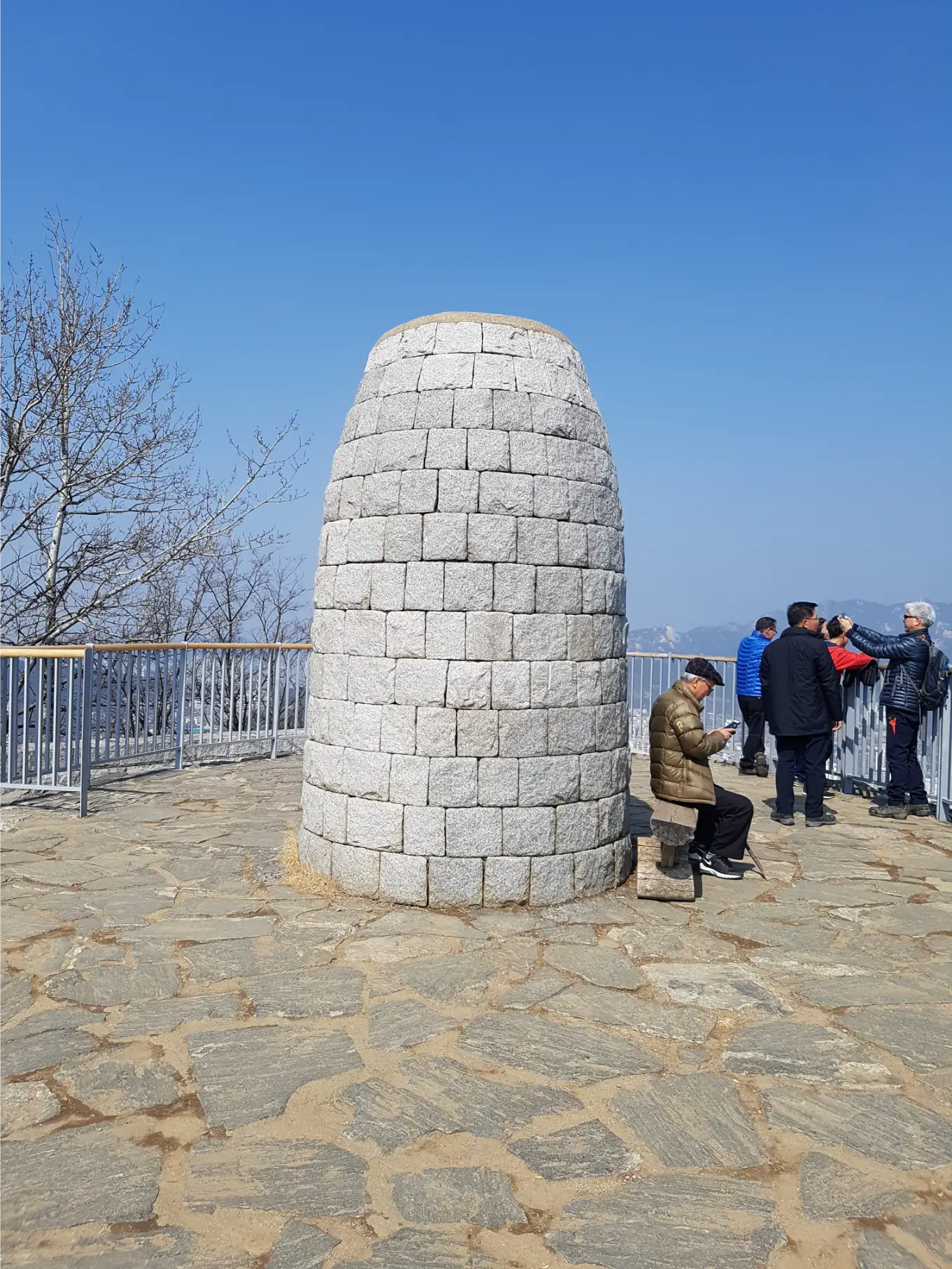
What makes Ansan Mountain hiking near Seoul even more appealing is its easy accessibility. Located close to central Seoul and well-connected by public transportation, the mountain is convenient for both locals and tourists. Whether you’re seeking a relaxing nature escape or a family-friendly outdoor adventure, Ansan Mountain is a perfect fit.
Ansan Mountain top hiking Trails Details
Ansan Mountain boasts a variety of hiking trails, ranging from easy, family-friendly walks to more moderate routes for experienced hikers. Each trail is carefully maintained, making it easy to navigate while offering plenty of spots to pause and appreciate the views. Whether you’re a seasoned hiker or someone seeking a quiet nature walk, mountain hiking near Seoul doesn’t get much better than this. Pack your comfortable shoes, bring a camera, and get ready to experience the serene charm of Ansan Mountain year-round.
1. Ansan Jarak-gil Trail (안산 자락길)
Route:
Starting Point: Seodaemun Independence Park → Wooden Deck Path → Observation Decks → Return to Seodaemun Independence Park
Length: 7 kilometers (circular)
Time Needed: 2–2.5 hours
Difficulty: Easy
Highlights:
This trail is Korea’s first barrier-free trail, making it ideal for families with strollers, elderly** visitors, and individuals with mobility challenges. The wooden deck path winds gently around the mountain, passing metasequoia trees, scenic observation decks, and rest areas. In spring, cherry blossoms and azaleas bloom along the trail, creating a colorful canopy, while autumn offers fiery red and orange foliage.
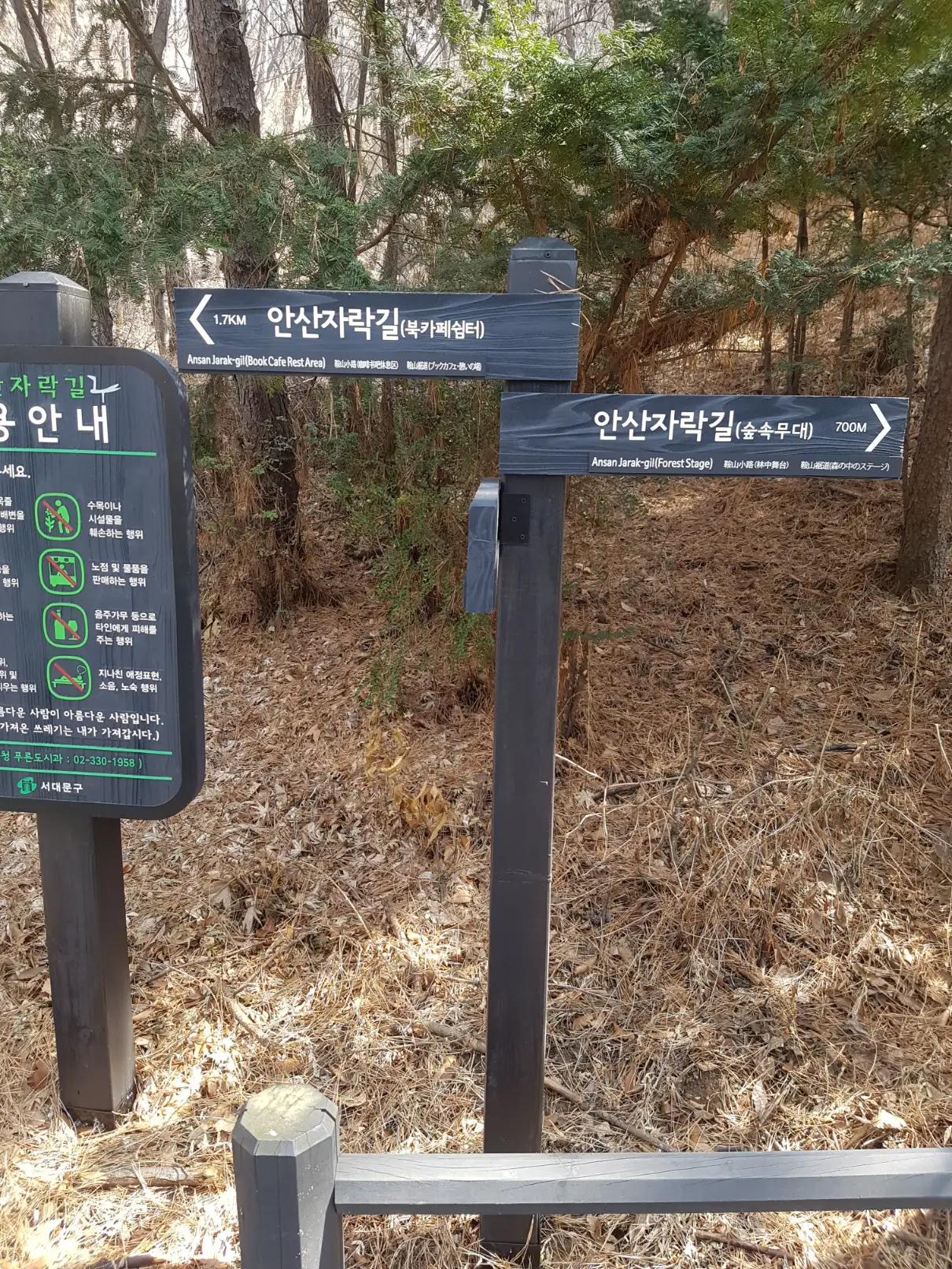
Tips:
- Visit in spring or autumn for the most vibrant scenery.
- Bring a light jacket, as the shaded path can feel cooler even during warmer months.
- This trail is perfect for photography enthusiasts due to its picturesque viewpoints and natural beauty.
2. Ansan Mountain Loop Trail
Route:
Starting Point: Seodaemun Independence Park → Forested Dirt Path → Observation Points → Summit → Loop Back
Length: 6.8 kilometers (loop)
Time Needed: 2–2.5 hours
Difficulty: Moderate
Highlights:
This trail is slightly more challenging, combining dirt paths and wooden walkways. It takes you to the summit, where you can enjoy stunning views of Namsan Tower, the Han River, and the surrounding cityscape. Along the way, you’ll pass peaceful forested areas and well-maintained rest stops. The summit is particularly beautiful during sunrise or sunset, making it a great choice for early risers or evening hikers.
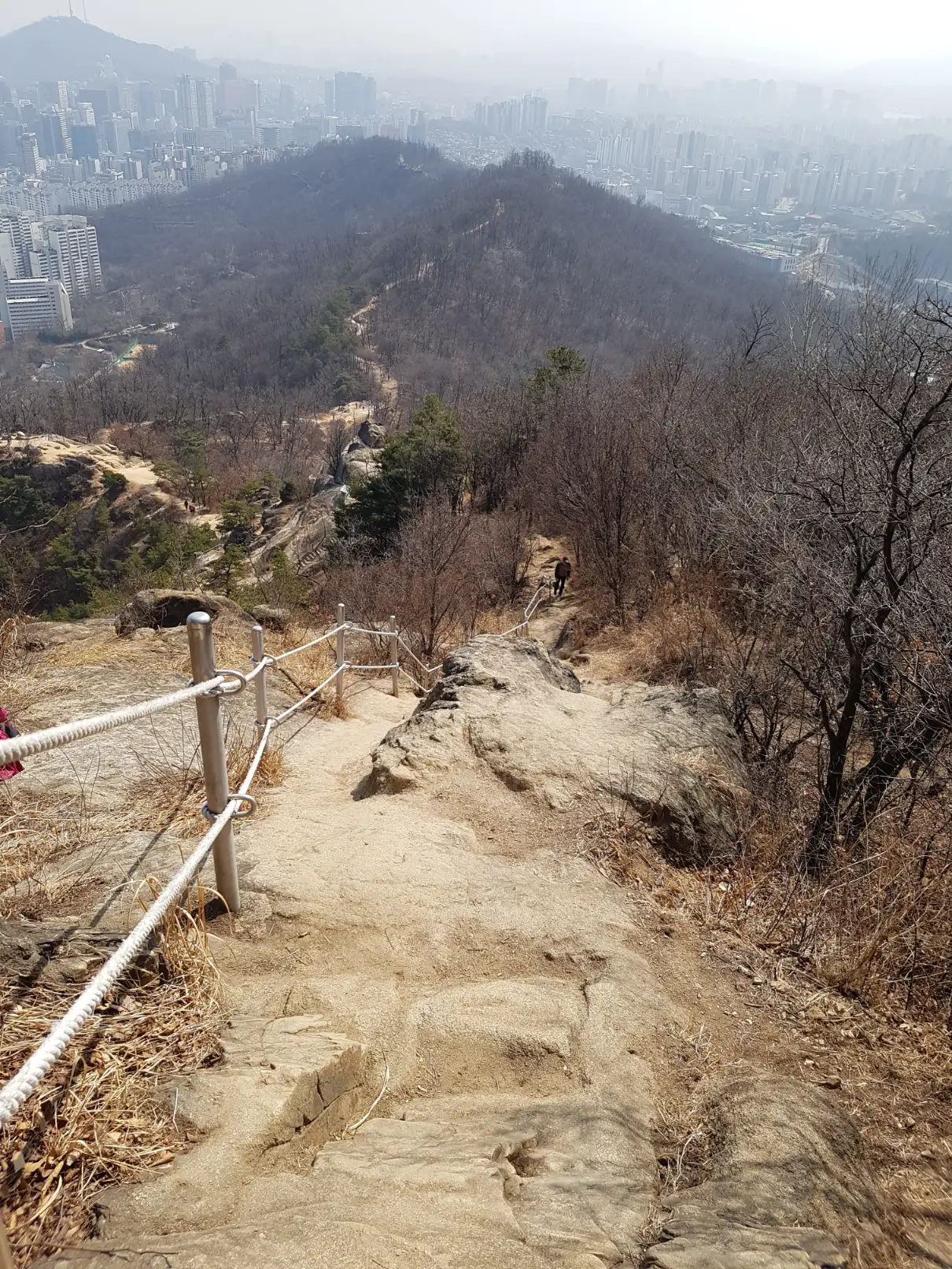
Tips:
- Wear sturdy hiking shoes with good grip, as parts of the trail are uneven.
- Start early in the morning to avoid crowds and enjoy cooler temperatures.
- Carry enough water and snacks for the hike, as there are limited facilities in this trail.
3. Bongwonsa Temple to Ansan Summit Trail
Route:
Starting Point: Bongwonsa Temple → Staircase Path → Rest Points → Summit
Length: 4.3 kilometers (out-and-back)
Time Needed: 1.5–2 hours
Difficulty: Moderate
Highlights:
This trail starts near the historic Bongwonsa Temple, which dates back to 889 AD. The path is primarily composed of stone staircases, offering a more dynamic hiking experience. The summit rewards you with sweeping views of Seoul and a sense of accomplishment. Additionally, hikers can extend their journey by connecting to the Muakjae Sky-Bridge, leading toward Inwangsan Mountain.
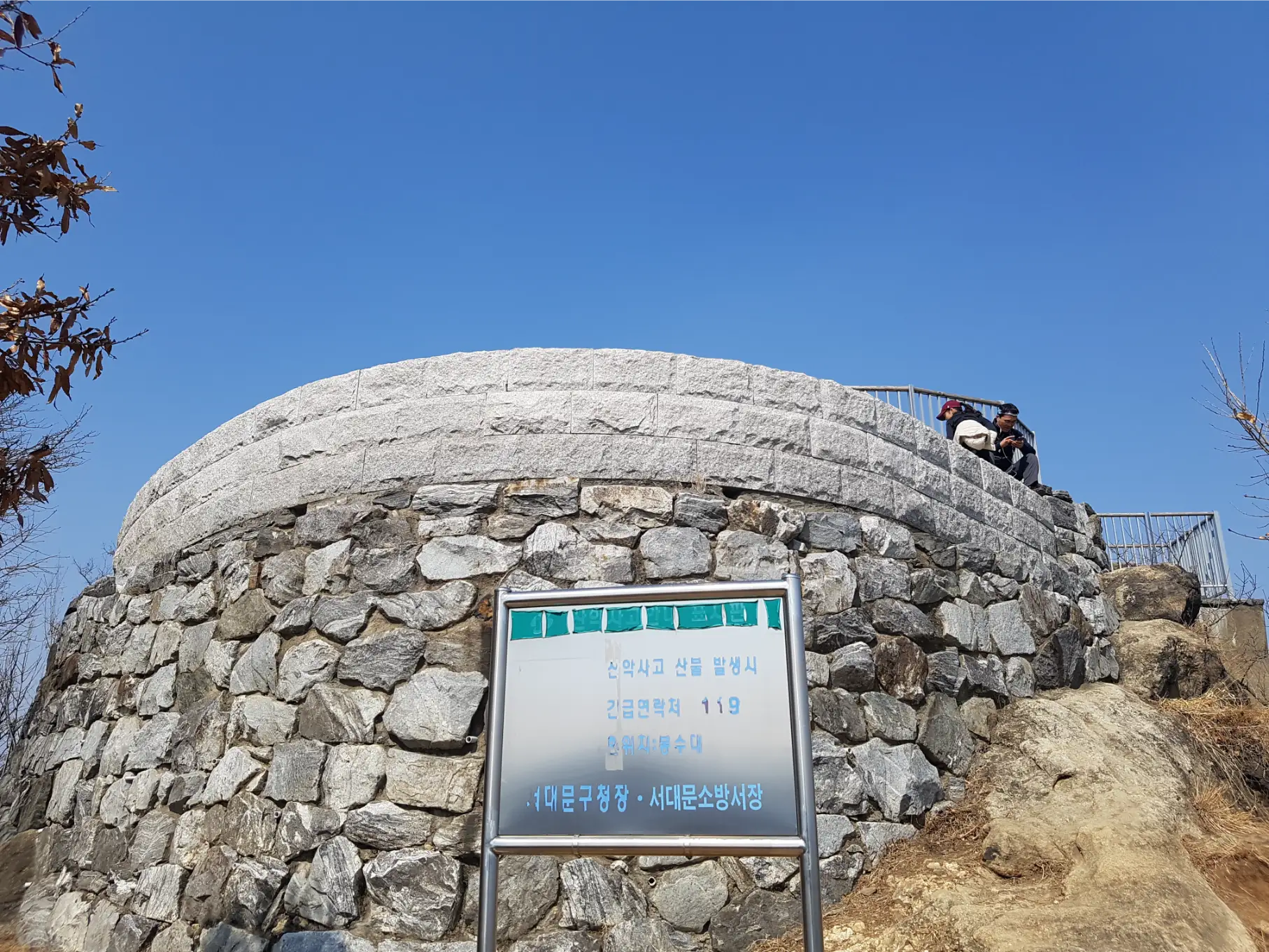
Tips:
- Take some time to explore Bongwonsa Temple before starting the hike. Its peaceful ambiance and traditional architecture are worth a visit.
- Pack a small first-aid kit for minor scrapes on the rocky staircase path.
- This trail is excellent for those looking to combine culture and nature in one hike.
4. Geumhwasan-Ansan Jarak-gil Loop
Route:
Starting Point: Geumhwasan Trailhead → Wooden Pathway → Geumhwasan Summit → Connect to Ansan Jarak-gil → Return
Length: 5–6 kilometers (varies depending on route)
Time Needed: 1.5–2.5 hours
Difficulty: Moderate
Highlights:
This trail combines parts of the Ansan Jarak-gil with the Geumhwasan summit, providing a varied hiking experience. The summit offers a quieter retreat compared to the main Ansan trails. The path includes shaded areas and rest pavilions, making it an excellent choice for summer hikes.
Tips:
- Visit during early summer to enjoy the cool shade of the trees.
- Pack a small picnic to enjoy at one of the pavilions along the trail.
- Use insect repellent during the warmer months to avoid mosquito bites.
Best Time to Visit Ansan Mountain
Spring (March–May):
Spring transforms Ansan Mountain into a floral paradise. Cherry blossoms and forsythias bloom along the trails, creating a vibrant landscape. The weather is mild, making it perfect for leisurely walks or longer hikes. The Ansan Jarak-gil Trail, in particular, is a popular choice during this season due to the stunning blooms.
Summer (June–August):
In summer, the mountain is covered in lush greenery. Shaded trails like the Geumhwasan-Ansan Jarak-gil Loop provide a cool retreat from Seoul’s heat. Early morning or late afternoon hikes are recommended to avoid the peak temperatures.
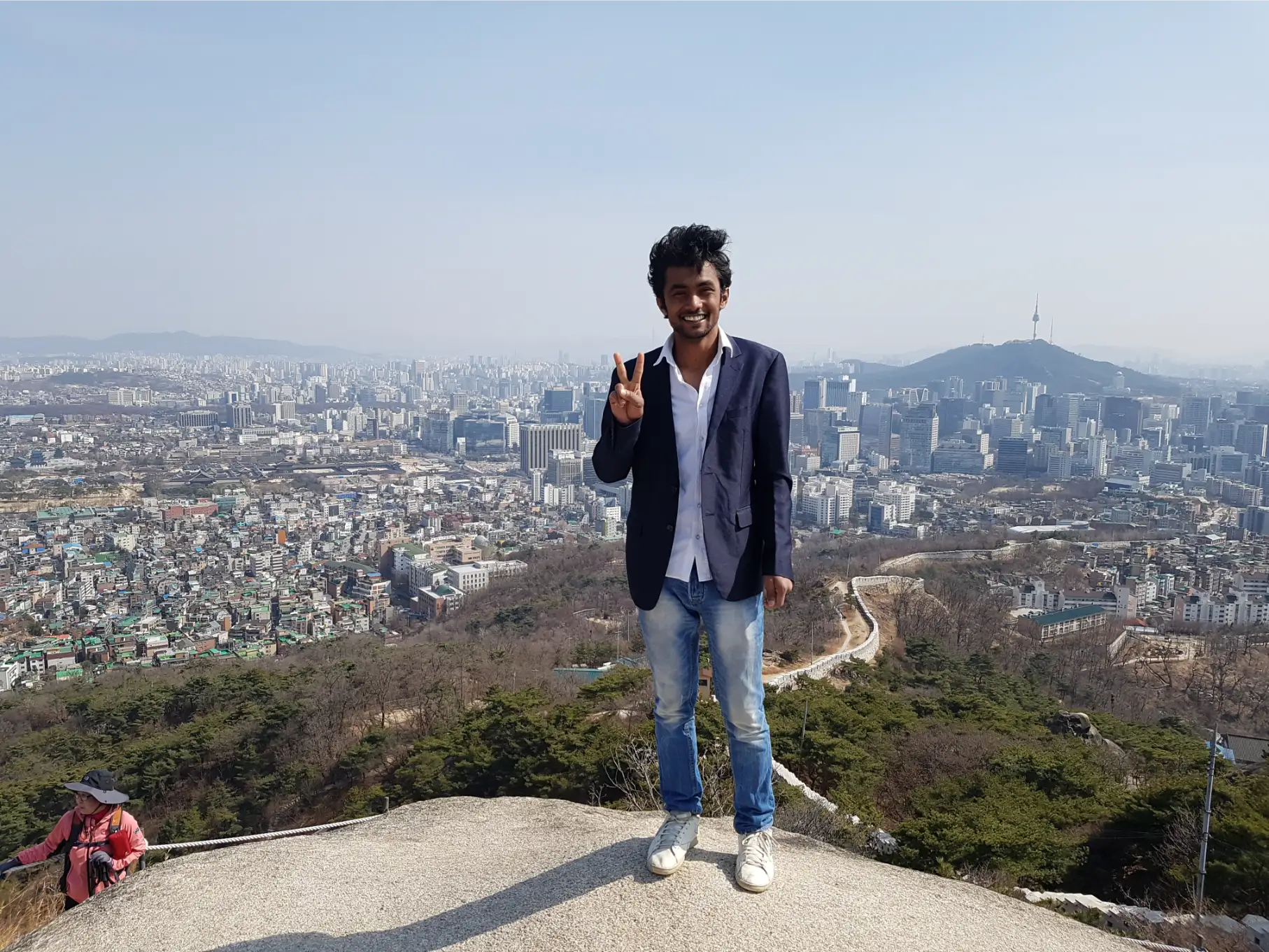
Autumn (September–November):
Autumn is arguably the best season to visit Ansan Mountain. The trails are adorned with vibrant red, orange, and gold leaves, making every step a visual delight. The Ansan Mountain Loop Trail offers some of the most breathtaking views during this season.
Winter (December–February):
Winter hikes are serene and peaceful, with fewer visitors and snow-dusted paths. The Bongwonsa Temple to Ansan Summit Trail is particularly magical, as the temple and surrounding forest take on a tranquil, otherworldly beauty.
What Can Be Combined with Ansan Mountain?
Ansan Mountain’s central location makes it easy to combine with other attractions. Nearby highlights include:
- Seodaemun Independence Park: Explore this historical park before or after your hike to learn about Korea’s fight for independence.
- Bongwonsa Temple: Perfect for a cultural and spiritual experience.
- Inwangsan Mountain: Connect via the Muakjae Sky-Bridge for an extended hiking adventure.
- Seodaemun Prison History Museum: A somber yet insightful look into Korea’s history during Japanese colonization.
How to Get to Ansan Mountain
By Subway: Take Line 3 to Dongnimmun Station. Exit 2 leads directly to Seodaemun Independence Park, where the trails begin.
By Bus: Buses like 7024 and 7212 stop near the park entrance.
By Car: Limited parking is available near Seodaemun Independence Park. Consider arriving early on weekends to secure a spot.
Top FAQs About Ansan Mountain
Q: Is Ansan Mountain suitable for beginners?
A: Yes, trails like the Ansan Jarak-gil are perfect for beginners and families.
Q: Is Ansan Mountain open year-round?
A: Yes, Ansan Mountain is open to the public throughout the year. However, it’s recommended to check weather conditions before your visit, especially during winter or the rainy season.
Q: Can I camp on Ansan Mountain?
A: No, camping is not allowed on Ansan Mountain. However, the trails are short enough to be completed in a day, and there are plenty of accommodations in nearby areas like Jongno or Seodaemun.
Q: Are there guided any tours available?
A: While Ansan Mountain doesn’t typically offer guided tours, local hiking groups sometimes organize hikes. Apps like Meetup or community forums are good places to find organized events.
Q: Is there any wildlife on Ansan Mountain?
A: Yes, you might encounter small wildlife such as squirrels, birds, and insects. The mountain is known for its rich biodiversity, especially during spring and summer.
Q: Can children hike Ansan Mountain?
A: Absolutely! Trails like the Ansan Jarak-gil are family-friendly and designed for all ages. The wooden deck paths are stroller-friendly as well.
Q: Are bicycles allowed on the trails?
A: No, bicycles are not allowed on most trails, as they are primarily designed for walking and hiking.
Q: Is there public Wi-Fi on the mountain?
A: Public Wi-Fi is not available on the trails. However, you can access free Wi-Fi at Seodaemun Independence Park or nearby cafes.
Q: How crowded is Ansan Mountain?
A: Ansan Mountain is generally less crowded than other popular mountains like Bukhansan or Namsan. Weekdays and early mornings are the quietest times to visit.
Q: Are there restrooms on the trails?
A: Restrooms are available at Seodaemun Independence Park and along some trails, including the Ansan Jarak-gil.
Q: What should I bring for the hike?
A: Comfortable shoes, water, light snacks, and seasonal gear like sunscreen or a jacket.
Why You Should Hike Ansan Mountain
Ansan Mountain offers a blend of natural beauty, cultural significance, and accessibility that few hiking spots can match. From its family-friendly trails to its breathtaking summit views, Ansan is a destination that promises something for everyone. Plan your visit today and discover why this hidden gem deserves a spot on your Seoul bucket list!
